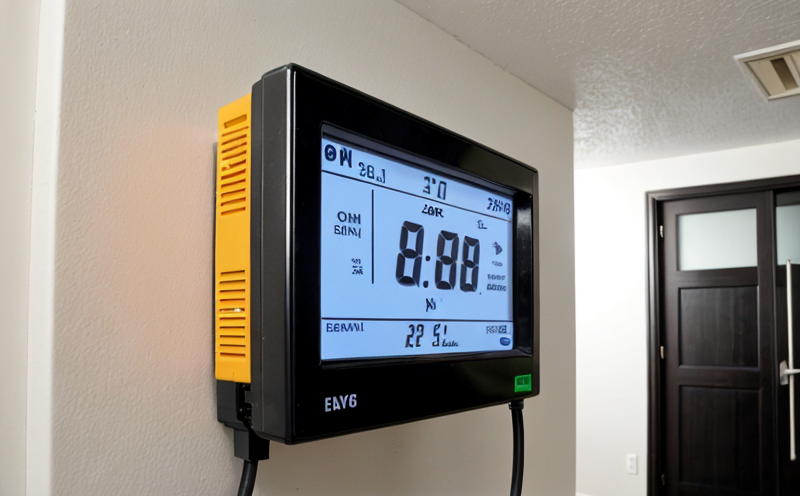ISO 25745 Energy Efficiency Testing of Lifts and Escalators
The ISO 25745 standard is a cornerstone in ensuring that lifts and escalators meet stringent energy efficiency requirements. This standard applies to elevating equipment, including passenger elevators, freight elevators, service lifts, dumbwaiters, moving walks, and inclined moving walks. It mandates comprehensive testing procedures to evaluate the energy consumption of these devices during both normal operation and under various fault conditions.
Implementing ISO 25745 is crucial for manufacturers, installers, and operators who aim to comply with regulatory standards and demonstrate their commitment to sustainability. The standard ensures that lifts and escalators are designed and operated in a manner that minimizes energy usage without compromising safety or performance. This not only reduces operational costs but also contributes positively to environmental conservation by lowering greenhouse gas emissions.
The testing process under ISO 25745 involves several key steps, including the selection of test specimens, preparation of the equipment for testing, and the execution of various energy measurement procedures. The standard specifies detailed protocols for measuring the electrical power consumed by lifts and escalators during different operational modes, such as idle, rated load, and overloading conditions.
For lifts, the focus is on optimizing motor efficiency, reducing friction losses, and enhancing braking systems to minimize energy waste. For escalators, the emphasis is on improving drive system performance, optimizing chain or belt tensioning, and ensuring proper lubrication of moving parts. The standard also includes provisions for testing under fault conditions, such as partial load operation, which helps in assessing the resilience of the equipment against potential inefficiencies.
The results of these tests are critical for manufacturers to identify areas where improvements can be made. By adhering to ISO 25745, companies ensure that their products meet or exceed industry standards, thereby enhancing their market competitiveness and reputation among environmentally conscious consumers. The standard also supports regulatory compliance in various regions around the world, making it easier for businesses to navigate international markets.
The implementation of ISO 25745 not only benefits manufacturers but also has a significant impact on end-users. Consumers can expect safer, more reliable, and energy-efficient lifts and escalators that are less expensive to operate over their lifetimes. This translates into lower utility bills for building owners and operators, contributing to long-term cost savings.
Customer Impact and Satisfaction
- Safety Improvement: ISO 25745 ensures that lifts and escalators operate safely under all conditions. This reduces the risk of accidents and enhances user confidence.
- Economic Benefits: By optimizing energy consumption, customers can expect lower operational costs, which translates into substantial savings over the equipment's lifetime.
- Environmental Contribution: Energy-efficient lifts and escalators contribute to reduced carbon footprints. This aligns with global environmental goals and supports sustainability initiatives.
International Acceptance and Recognition
ISO 25745 is widely recognized and accepted across the globe, ensuring that lifts and escalators meet international standards for energy efficiency. This standard is adopted in numerous countries and regions, making it easier for manufacturers to export their products internationally.
The acceptance of ISO 25745 also ensures consistent quality and performance expectations globally. This harmonization simplifies compliance with local regulations and facilitates smoother operations across different markets.
Environmental and Sustainability Contributions
The implementation of ISO 25745 aligns directly with environmental sustainability goals by promoting energy-efficient designs and operational practices. By reducing the carbon footprint associated with lifts and escalators, manufacturers contribute positively to global efforts in combating climate change.
In addition to lowering greenhouse gas emissions, ISO 25745 supports broader sustainability initiatives such as resource conservation, waste reduction, and sustainable procurement practices. These contributions are essential for achieving long-term environmental benefits that align with international commitments like the Paris Agreement.





